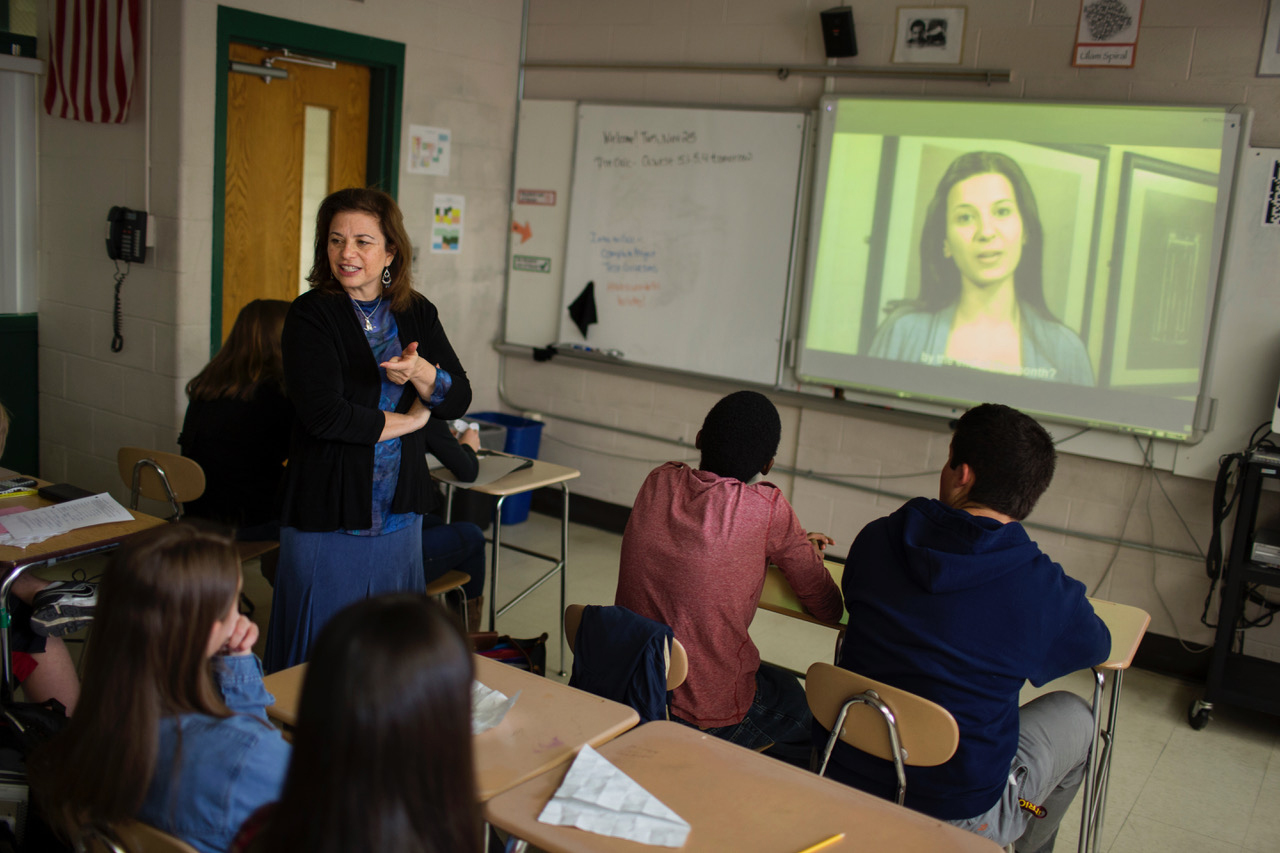Brief
MIT BLOSSOMS
Learning Videos Advance STEM Education While Enhancing Teacher Professional Development
Connected Science Learning May-July 2017 (Volume 1, Issue 3)
By Elizabeth Murray and Richard Larson

Showing how various math and science topics relate to the real world is the key to motivating youth to pursue STEM careers. This idea is essential to the MIT (Massachusetts Institute of Technology) BLOSSOMS initiative.
BLOSSOMS, which stands for Blended Learning Open Source Science or Math Studies, is a program that freely provides interactive video lessons that teach teens how math and science pertain to everyday life, while encouraging critical-thinking skills. BLOSSOMS offers more than 200 online videos on various STEM topics, which are presented in a form that will provide youth with a foundation for understanding why things work the way they do.
Adding BLOSSOMS to a high school–level learning experience not only improves STEM education for youth but also exposes educators to new tools and techniques for engaging teens in topics that are typically difficult to teach. BLOSSOMS videos are designed to move educators away from the scripted lecture format to one that promotes active learning and critical thinking. The 50-minute lessons, which can be shown on a large screen at the front of a room, are interspersed with breaks, during which youth, guided by their educator, engage in a variety of activities that challenge them to problem-solve.
BLOSSOMS videos are presented in a way that high schoolers find interesting and challenging. The videos pose surprising and intriguing questions, such as:
- “How do mosquitoes fly in the rain?”
- “Will an ice cube melt faster in salt water or freshwater?”
- “Do my friends on Facebook have more friends than I do?”
- “Is it possible for all the students in Lake Wobegon to be above average?”
According to reports from teachers and endorsements from the two largest teachers’ unions in the United States (the National Education Association and the American Federation of Teachers), these math and science challenges have proven to be an effective way to get teens involved in and committed to a lesson. They also show that STEM thinking can be fun while being creative, prompting high schoolers to draw on their fundamental knowledge.
BLOSSOMS started in 2008, when MIT worked with educators in Jordan and Pakistan to create the site’s first video lessons. Now, partnering educators and scientists from around the world contribute modules for BLOSSOMS. The program’s resources cover math, engineering, physics, biology, and chemistry, with topics ranging from astronomy to the Pythagorean theorem. Videos are available in about a dozen languages, and they include subtitles and voiceovers.
For schools and out-of-school institutions that lack the adequate bandwidth or computing devices to download or stream the digital videos, BLOSSOMS lessons are also available in DVD and video formats for the cost of shipping.
Elizabeth Murray (emurray@mit.edu) is project manager of MIT BLOSSOMS at the Massachusetts Institute of Technology in Cambridge, Massachusetts. Richard Larson (rclarson@mit.edu) is Mitsui Professor in the Institute for Data, Systems, and Society at the Massachusetts Institute of Technology in Cambridge, Massachusetts.


